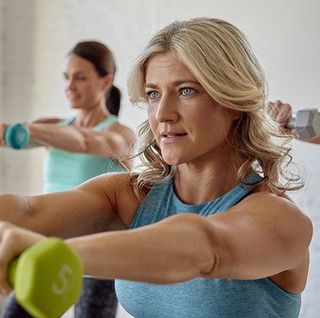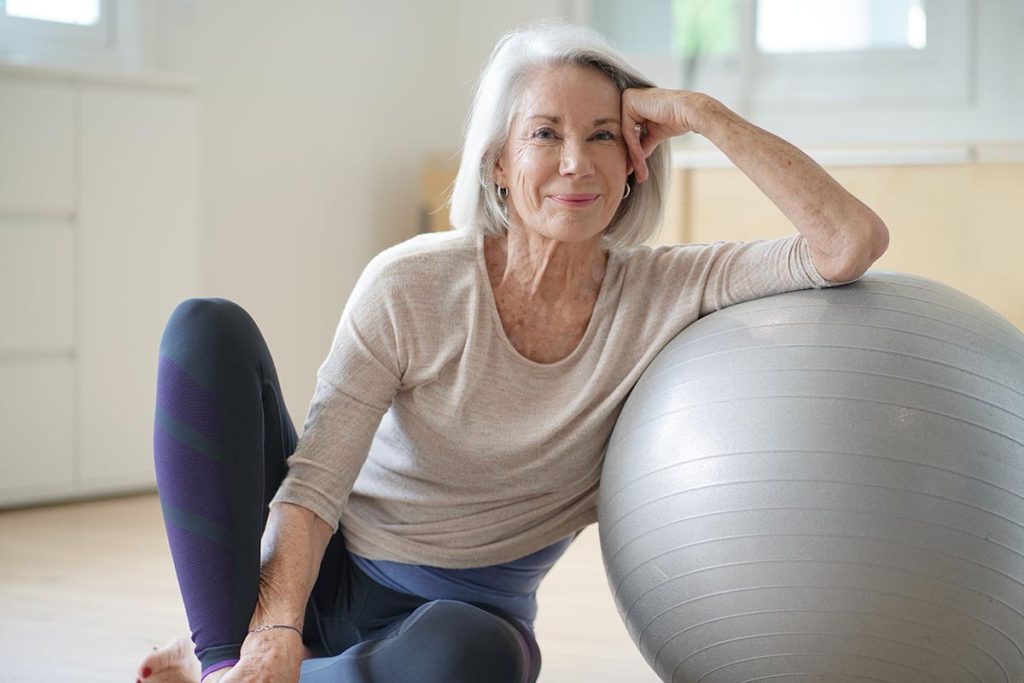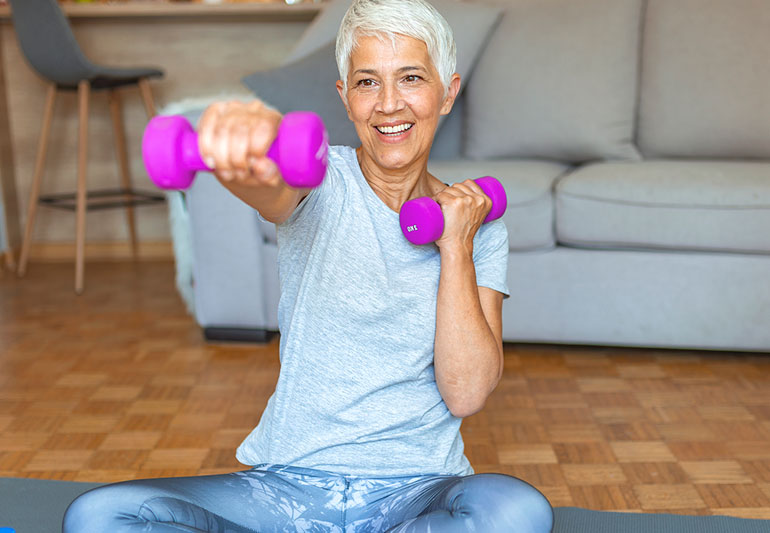We’ve heard it most of our lives: our metabolism is doomed to dwindle as we age, with the downward trend accelerating even more quickly after menopause. And with that declining metabolism comes the dreaded weight gain and “thicker” midsection.
Not so fast! New research published by Science suggests that our metabolic rate – the rate at which our bodies burn calories — holds relatively steady between the ages of 20 and 60 and only decreases at a rate of less than one percent per year thereafter. Further, the findings indicate no significant difference between the resting metabolic rates of men and women.

Instead, the study, which analyzed data from 6500 people, suggests that it is lifestyle changes that have lowered our ability to metabolize fat, maximize caloric burn and keep our metabolic processes in top form. And the number one factor they cite? A more sedentary lifestyle.
You see, most earlier studies on metabolism measured how much energy the body uses for basic vital functions (e.g., breathing, digesting, pumping blood). But those basic functions account for just 50 to 70 percent of the calories we burn each day. The others come from the energy we expend doing everything else: washing the dishes, walking the dog, working out at the gym, or going up and down the stairs. As we enter menopause, we simply tend to move around less than we used to.

Think about it. When we were in our 20s and 30s, we were likely more physically and cognitively active – going to college, landing our first jobs, repairing our first fixer-upper homes. In our 30s and 40s, many of us were busy carting the kids to and from activities, climbing a career ladder or traveling. As we approached menopause, things naturally slowed down a bit. The kids are grown and out of the house, we’re working less hours, and we have the time to socialize with friends around the dinner table.
These changes in activity mean that we’re moving less and slowly losing muscle mass, both of which are key to keeping the metabolic fires burning.
Fitness After Menopause
The good news is there are plenty of ways for gorgeously aging and staying healthy after menopause. Here are a few activities you can (re)build back into your schedule to ensure healthy aging.
Try HIIT Training
High Intensity Interval Training, or HIIT, is just what is sounds like – short bursts of high-intensity movement interspersed with rest or low intensity activities in between. HIIT is great for a couple of reasons, the most appealing of which is the intervals are short! You might not be able to run three miles without stopping, but doing step ups or kettlebell swings to get your heartrate up for 20 seconds at a time? Now that’s doable.
HIIT routines usually alternate between high intensity activities and lower-intensity, weight-lifting or weight-bearing exercises, such as dumbbell curls, push-ups or squats, which build lean muscle mass.
HIIT sessions are effective because they do two things referenced in metabolism study: they keep your heart rated elevated (i.e., expending calories) and they help build muscle, which boosts your resting metabolism.
In fact, the researchers found that “just five four-second bursts of exercise performed at full effort every hour throughout the day can dramatically increase fat metabolism by as much as 49 percent.”
Expand Your Social Network with a Walking/Hiking Group
One of the luxuries of fitness after 40 is that most of us generally have more time on our hands. Paradoxically, though, our social circle may have gotten smaller since the kids left the nest. The access we used to have to a “built in” social network, such as the parents of our kids’ friends or even work colleagues, may be diminishing.
Now is the ideal time to rekindle old friendships and make some new ones by organizing a hiking group. Depending on where you live, the term “hike” might simply mean walking around your neighborhood. Ideally, though, you can find some easy-to-moderate trails nearby that will elevate your heartrate.

Think about some women in your life you might not know very well (e.g., the neighbor a few houses down, that mom you’ve lost touched with, a former co-worker) and invite them to a weekly or monthly hike. Try to get a core group of at least 10 people to keep the group active and hold each other accountable. You can organize the entire thing or take turns letting others choose the route each week. Schedule a coffee date immediately afterward to strengthen the bonds.
If you don’t want to lead the effort, see if there’s an existing hiking group on your local Meet Up or Next Door apps.
Do Yoga to Maintain Flexibility
No, we’re not necessarily talking about Power, Hot or even Ashtanga Yoga – although any of these would be a great addition. No, for we women of a certain age, a regular practice of Yin, or “restorative” yoga, will keep our joints flexible.
While many types of yoga focus on your muscles, restorative yoga targets your deep connective tissues, including your fascia, ligaments, joints and bones. It’s slower, gentler and more meditative than other types of yoga, and the poses are held for a longer period of time. Restorative yoga helps you stretch and lengthen those rarely used tissues, prompting us to get into the nooks and crannies we rarely tend to use anymore. Our favorite is the Pigeon Pose, which is a considered a “hip opener” and just feels so darned good!
Even if you don’t go to a formal yoga class, take a few minutes each day to do some of the deep stretches found in Yin Yoga rather than relying on the traditional stretches you’ve probably been doing most of your life. That way, you’ll be gently coaxing your shoulder, wrist, ankle and other joints to remain flexible, which will allow you to continue to do the more rigorous activities necessary for healthy living.
Fitness after menopause may look a little different than your fitness routine of old, but it can be just as varied and effective as ever. Best of all, you’ll be catering your activities to the “you” you are now!


0 Comments